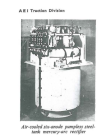The oddball frequencies arise from the standard of measuring electrical AC in Cycles per Second (Hertz), whereas the mechanical generation plant is more commonly measured in Revolutions Per Minute, or RPM. Thus 50Hz is 3,000 RPM, 16.6Hz is 1,000 RPM, etc. The public electricity supply standardised on 50Hz in the UK, and 60Hz in the USA. You could convert in the days before power electronics, but it not only required bulky and inefficient local rotary converters, but was a real challenge outside the power station to keep these all synchronised for speed with one another.
The USA have converted some of their 25Hz AC to 60Hz, so they can readily use the public electricity supply rather than their own independent system. I'm not sure what changes were required to the rolling stock to achieve this. The AC voltage stayed the same. The USA High-V distribution lines are carried on high extensions to the lineside masts, at road overbridges they are carried up extra high right over the top of everything.
The lineside changeover plant there always reminds me of that on the London Underground at the likes of Queens Park or Putney Bridge, where their trains again seamlessly run from a fourth rail +420V/-210V to a +630V/0 system, with the 4th rail (for the Underground trains pickups) bonded to the running rails for the return current, which the main line trains use.
The USA have converted some of their 25Hz AC to 60Hz, so they can readily use the public electricity supply rather than their own independent system. I'm not sure what changes were required to the rolling stock to achieve this. The AC voltage stayed the same. The USA High-V distribution lines are carried on high extensions to the lineside masts, at road overbridges they are carried up extra high right over the top of everything.
The interface between the French 25kV AC and Italian 3kV DC at Ventimiglia, on the Riviera, is interesting. Most modern French stock is dual AC/DC, so about a mile before the station there is a transition to French 1,5kV DC, seamlessly on the move. This runs through the station, where Italian DC locomotives equally circulate on half voltage. A mile on the Italian side there's a further transition to full voltage.Indeed - it's easier to have a multi-voltage train and a short gap (or overlap) between systems, rather than trying to get 2 systems to co-exist over a significant length. Hence why the 3KV DC - 25KV AC conversion is interesting, as it means that the existing DC area must be readied for AC while still handling DC before it's changed over.
The lineside changeover plant there always reminds me of that on the London Underground at the likes of Queens Park or Putney Bridge, where their trains again seamlessly run from a fourth rail +420V/-210V to a +630V/0 system, with the 4th rail (for the Underground trains pickups) bonded to the running rails for the return current, which the main line trains use.
How many track miles (not route miles) are there on the London Underground or the New York Subway? And how many passengers per day do they handle compared to the WCML?I would consider that the existence of precisely 1 third rail network of more than 1000 miles on the entire planet answers the question pretty thoroughly

